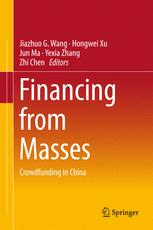

Most ebook files are in PDF format, so you can easily read them using various software such as Foxit Reader or directly on the Google Chrome browser.
Some ebook files are released by publishers in other formats such as .awz, .mobi, .epub, .fb2, etc. You may need to install specific software to read these formats on mobile/PC, such as Calibre.
Please read the tutorial at this link. https://ebooknice.com/page/post?id=faq
We offer FREE conversion to the popular formats you request; however, this may take some time. Therefore, right after payment, please email us, and we will try to provide the service as quickly as possible.
For some exceptional file formats or broken links (if any), please refrain from opening any disputes. Instead, email us first, and we will try to assist within a maximum of 6 hours.
EbookNice Team

Status:
Available5.0
5 reviewsThis book addresses the integration of the Internet and finance which recently has been one of the most notable topics of discussion in the media, the business community, academia, and among policymakers, both in China and worldwide. As a comprehensive, in-depth analysis of the one of the fastest growing industries in China, the book covers all the most important areas and issues in the crowdfunding industry in China, including the definition, types, and history of crowdfunding, the scale of the crowdfunding market, the basic business models and risk analysis of crowdfunding, the characteristics of the typical crowdfunding platforms, case studies of the leading crowdfunding platforms in China, and the future development of the crowdfunding industry in China. The book combines theoretical analysis with conceptual discussions and best practices in the crowdfunding industry in China. It is of interest to a variety of readers around the globe, such as (1) existing and potential fund demanders; (2) existing and potential fund providers; (3) investors and professionals running crowdfunding platforms; (4) professionals and major shareholders of traditional financial institutions; (5) staff in regulatory government agencies; (6) academics; and (7) the general public.